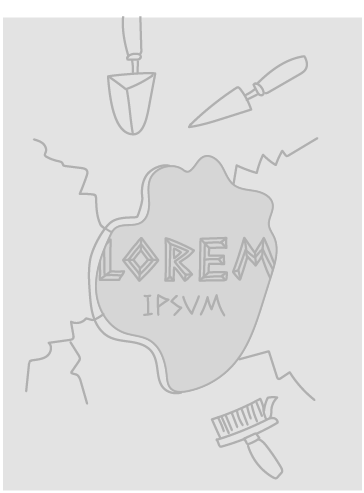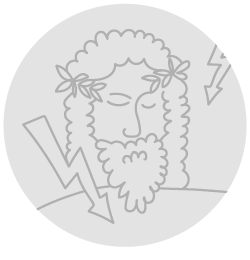Title of the work
Studio / Production Company
Country of the First Edition
Country/countries of popularity
Original Language
First Edition Date
First Edition Details
New World Computing, Heroes of Might and Magic: A Strategic Quest. Designed by Jon van Coneghem, and programmed by Phil Steinmeyer. Agoura Hills, California: New World Computing (September 2005 for DOS, February 1996 for Windows.
Platform
Official Website
Might&Magic at web.archive.org (accessed: December 6, 2022).
Genre
Strategy*
TBS (Turn-based strategy)*
Target Audience
Crossover (teenagers, young adults and adults)
Cover

We are still trying to obtain permission for posting the original cover.
Author of the Entry:
Maciej Skowera, University of Warsaw and Warsaw Public Library – Central Library of Mazovia Province, mgskowera@uw.edu.pl
Peer-reviewer of the Entry:
Elżbieta Olechowska, University of Warsaw, elzbieta.olechowska@gmail.com
Katarzyna Marciniak, University of Warsaw, kamar@al.uw.edu.pl

Limbic Entertainment GmbH (Studio)
Limbic Entertainment GmbH is a German video game development studio founded in 2002 by Stephan Winter, Eike Radunz, and Alexander Frey. It is best known for creating Might & Magic Heroes VI with its add-ons in collaboration with Black Hole Entertainment and Virtuos and HoMM VII and its add-ons, as well as an RPG Might and Magic X: Legacy (all for Ubisoft).
Prepared by Maciej Skowera, University of Warsaw and Warsaw Public Library – Central Library of Mazovia Province, mgskowera@uw.edu.pl and maciej.skowera@koszykowa.pl

New World Computing, Inc., (Studio)
New World Computing, Inc., was an American video games development studio founded in 1984 by Jon van Coneghem. In 1986, NWC released Might and Magic Book One: The Secret of the Inner Sanctum, the first in a series of RPGs set in the world where the Heroes of Might and Magic series would later be set. In 1990, the studio released King’s Bounty, a turn-based strategy game that formed the basis for the first installment of the HoMM series, released in 1995. A year later, NWC became part of the 3DO company after being a part of NtN Communications in 1994–1996. Subsequent installments of HoMM, especially HoMM III with its add-ons, brought significant profits to the studio. It also developed eight more games in the original Might and Magic RPG series. However, the fourth installment of HoMM, released in 2002, was not a great success, and in 2003, 3DO – along with NWC – declared bankruptcy. The studio’s last game was Winds of War, an add-on to HoMM IV. The rights to the HoMM series, meanwhile, were acquired by Ubisoft.
Prepared by Maciej Skowera, University of Warsaw and Warsaw Public Library – Central Library of Mazovia Province, mgskowera@uw.edu.pl and maciej.skowera@koszykowa.pl

Nival Interactive (Studio)
Nival Interactive is a Russian video Games development studio founded in 1996 by Sergey Orlovskiy. The studio is best known for its RPGs and strategy video games, including the Blitzkrieg, Etherlords, and Rage of Mages series. In 2006, Nival created Heroes of Might and Magic V for Ubisoft, and later the studio developed two add-ons.
Prepared by Maciej Skowera, University of Warsaw and Warsaw Public Library – Central Library of Mazovia Province, mgskowera@uw.edu.pl and maciej.skowera@koszykowa.pl
Adaptations
The I–IV games are set in the same universes as the I–IX installments of the Might and Magic RPG series.
The Polish Archon Studio has been developing the board game adaptation of HoMM III.
Sequels, Prequels and Spin-offs
For the games in the series, see Summary.
Also, fans of the series, especially of HoMM III, developed unofficial patches, add-ons, and sequels, including Heroes of Might and Magic 3½: In the Wake of Gods (first edition – 2001; still being constantly actualized and re-worked) and Heroes of Might and Magic III: Horn of the Abyss (2011).
Summary
Basics
Heroes of Might and Magic (HoMM) is a turn-based strategy game series, which so far has seven parts (plus add-ons), the first four were produced by New World Computing and distributed by 3DO and the fifth one by Nival Interactive for Ubisoft, the sixth and seventh ones – by Limbic Entertainment also for Ubisoft. As for now, the series consists of the following games and official add-ons:
Heroes of Might and Magic: A Strategic Quest, 2005;
Heroes of Might and Magic II: The Succession Wars, 1996,
Heroes of Might and Magic II: The Price of Loyalty, 1997;
Heroes of Might & Magic III: The Restoration of Erathia, 1999,
Heroes of Might and Magic III: Armageddon’s Blade, 1999,
Heroes of Might and Magic III: The Shadow of Death, 2000,
Heroes Chronicles (a series of spin-offs), 2000–2001;
Heroes of Might and Magic IV, 2002,
Heroes of Might and Magic IV: The Gathering Storm, 2002,
Heroes of Might and Magic IV: Winds of War, 2003;
Heroes of Might and Magic V, 2006,
Heroes of Might and Magic V: Hammers of Fate, 2006,
Heroes of Might and Magic V: Tribes of the East, 2007;
Might & Magic Heroes VI, 2011,
Might & Magic: Heroes VI – Pirates of the Savage Sea (DLC), 2012,
Might & Magic: Heroes VI – Danse Macabre (DLC), 2012,
Might & Magic: Heroes VI – Shades of Darkness, 2013;
Might and Magic: Heroes VII, 2015,
Might and Magic: Heroes VII – Trial by Fire, 2016.
All the games are set in a medieval-like fantasy setting, with the first four forming a coherent narrative set in one universe (the planet Enroth in the first three games and the planet Axeoth in the fourth). The subsequent games produced for Ubisoft, using the same mechanics, are set in a completely different universe (Ashan) and tell a different story. Each time, however, it is about the struggle of various factions (different in each game) for dominion over certain countries, continents, etc., to acquire powerful artifacts, resolve political conflicts, defeat evil forces (e.g., necromancers, demons), etc. – quests that are well known from the fantasy-genre.
Gameplay
The games feature a town screen, an adventure map, and a combat screen – these are the main elements of the game’s mechanics.
The player usually starts with one or more heroes (specializing in ‘might’ or ‘magic’; characters, by gaining experience, become more powerful) and most often (though not always) with one or more towns of a specific faction(s).
On the town screen, one may recruit creatures for their army (depending on the part of the game, new units appear every week, every day, or every few days; they have several levels; the higher the level, the stronger they are in battle) and construct buildings where they are recruited (and others, bringing certain bonuses, property benefits, allowing to develop the hero’s skills, etc.).
On the adventure map, heroes (usually shown as riding horses) collect resources and artifacts, recruit creatures from their habitats, visit clairvoyants, solve puzzles, occupy mines, creature habitats, and new towns (neutral or enemy), fight neutral and enemy armies, etc. Their number of movement points is limited daily; hence the game is played in alternating turns – for the player(s) and opponent(s).
The battle screen is shown when there is an encounter with the enemy or an attempt to seize an enemy city or garrison. Here, the player’s army units and the enemy units fight each other in turns. In some parts of the game, the heroes join the battle as units, but often they can only cast spells.
The games in the series feature campaigns consisting of several scenarios, as well as single scenarios (to play alone or in multiplayer). To win a scenario (map), one often needs to seize all enemy towns and kill all enemy characters. At other times, one needs to occupy a specific city or cities, defeat a specific character, find a specific artifact, etc.
Analysis
Factions
Each game has several factions (from four in the first one to nine in HoMM III: Armageddon’s Blade). They are usually axiologically linked to good or evil, but some are neutral. Each faction has specific units and characters and different types of towns. For example, in HoMM IV, the Nature faction consists of fairies, wolves, white tigers, elves, unicorns, griffins, phoenixes, and faerie dragons; their own towns are called preserves, while in HoMM VI, the Necropolis faction gathers skeletons, ghouls, ghosts, liches, lamassus, vampires, and fate spinners.
In different games in the series, units change their assignment depending on the faction. For example, the centaur in HoMM II is a unit in the faction of the evil Warlock, in HoMM III – it is a representative of the elven Rampart faction, and in HoMM IV – it becomes a unit in the barbaric Might faction.
Since the first installment, factions feature units derived from many belief systems and mythologies from famous cultural texts, including classic fantasy works (e.g., by J.R.R. Tolkien), etc. Some of these beings are from classical mythology; the most Greek-and-Roman-antiquity-inspired creatures are, for instance:
- centaurs,
- cerberi,
- cyclopes,
- giants,
- gorgons,
- griffins,
- harpies,
- hydras,
- medusas,
- manticores,
- minotaurs,
- pegasi,
- titans.
Interestingly, certain units appear in many games in the series (e.g., griffins), others in single titles (e.g., gorgons). As these creatures are assigned to specific factions, they simultaneously become embedded on different axiological poles. For example, in all games they appear, minotaurs are in evil-leaning factions, while over the course of successive games, centaurs move from an ‘evil’ faction, through a ‘good’ one, to a neutral (see above).
The appearance of units, their traits, and their combat skills often remain true to their ancient characteristics. For example, hydras have multiple heads, cyclops are one-eyed, and medusas can turn other creatures to stone with their gaze. Captivatingly, in the games, creatures from different parts of the world, mythological orders, etc., exist within the same towns and factions. For example, in HoMM IV, centaurs and harpies live among orcs and behemoths, and in HoMM III, pegasi are ridden by elves and live next to dwarves.
The games in the series, popular around the world, are a fascinating example of deriving certain elements from the Classical tradition and mixing them with many other traditions, which leads not to cognitive chaos but – because of the consistent rules governing diegetic universes – to the creation of a coherent vision of the existence of various creatures next to each other.
Gameplay
Many maps feature maze-like spaces that may be interpreted as alluding to the Cretan Minotaur myth.
The player may find Pandora’s box on the adventure map, which has a range of different things it could possess, from resources to available units to the power to recruit evil monsters to combat, etc.
Scenarios
Some scenarios are directly derived from the Classical tradition. For example, in HoMM III the Myth and Legend map makes the player a god who must find the Titan’s Cuirass, stolen by Autolycus, and the Pandora’s Box map sees the Underworld where “Hades has taken a vacation.”
Further Reading
Bièvre-Perrin, Fabien, “The Different Faces of the Lernaean Hydra in Contemporary Pop Culture: From Cinema to Video games”, Thersites 8 (2018): 67–84 (accessed: December 6, 2022).
Czyżak, Krzysztof, “Kolonizacja stawów hydr – narracje w serii Heroes of Might and Magic [Hydra Ponds’ Colonization – Narratives in the Heroes of Might and Magic Series]”, Images 29.38 (2021): 205–219 (accessed: December 6, 2022).
Addenda
Older games in the series are still popular despite the fact they were released decades ago; HoMM III remains the most loved game out of all in the series – there have been e-sport contests organized focusing on this one, orchestra concerts with music from the game soundtrack have taken place, exclusive anniversary editions have been released, etc.


